Introduction
Fish maw soup, a culinary delight hailing from the rich traditions of Chinese cuisine, is a dish that embodies both elegance and nourishment. Known for its gelatinous texture and rich, savory flavor, fish maw—derived from the swim bladders of various fish species—has been cherished for centuries as a source of collagen and essential nutrients. Making fish maw soup is an art form that requires precision, patience, and an understanding of the delicate balance between ingredients. This guide aims to demystify the process, walking you through each step to create a delectable bowl of fish maw soup that will delight your taste buds and nourish your body.
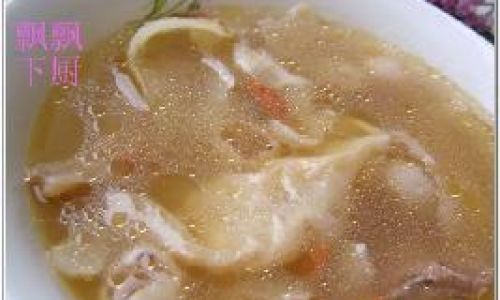
Understanding Fish Maw
Before diving into the recipe, it’s crucial to understand the star ingredient: fish maw. This translucent, rubbery substance, when cooked properly, transforms into a delicate, almost melt-in-your-mouth texture. Rich in protein and collagen, fish maw is believed to have various health benefits, including skin rejuvenation and joint health. When sourcing fish maw, look for fresh, odorless pieces with a clean, translucent appearance. Avoid those that are discolored or have a strong fishy smell, as they may be of poor quality or past their prime.
Preparing the Ingredients
Fish Maw Preparation:
- Begin by soaking the fish maw in cold water for at least 2-3 hours, changing the water every 30 minutes to remove any impurities and blood.
- After soaking, rinse the fish maw thoroughly under running water.
- To soften the fish maw further, blanch it in boiling water for about 2-3 minutes. This step also helps to remove any remaining odors.
- Once blanched, drain and rinse the fish maw once more before cutting it into smaller, bite-sized pieces.
Other Essential Ingredients:
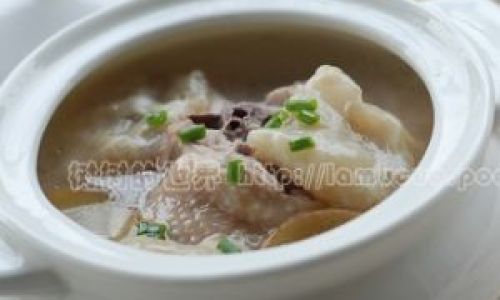
- Chicken or Pork Bones: Provides a rich, flavorful broth.
- Ginger: Helps to neutralize any fishy taste and adds warmth to the soup.
- Scallions: For a fresh, aromatic touch.
- Chinese Wolfberries: Adds a subtle sweetness and nutritional value.
- Red Dates: Enhances the soup’s natural sweetness and provides vitamins.
- Salt and White Pepper: To taste, for seasoning.
- Optional Ingredients: Dried mushrooms, sea cucumber, or other seafood can be added for added complexity and richness.
Cooking the Soup
Step 1: Preparing the Broth
- Begin by boiling a large pot of water. Add the chicken or pork bones and let them simmer for at least 1-2 hours to extract all the flavors and nutrients into the broth. Skim off any foam or impurities that rise to the surface during this time.
- While the bones are simmering, prepare the ginger by slicing it thinly and crushing it slightly to release its juices. Set aside.
Step 2: Adding the Fish Maw
- Once the broth has developed a rich, golden color and a strong aroma, add the prepared fish maw pieces. Allow them to cook gently in the broth for another 30-45 minutes, or until they become tender and translucent.
- During this time, add the sliced ginger to the pot. The ginger will not only flavor the soup but also help to balance the fishy taste of the maw.
Step 3: Seasoning and Final Touches
- After the fish maw has cooked to your desired tenderness, add the red dates, wolfberries, and any other optional ingredients. Allow these to simmer for an additional 10-15 minutes to infuse their flavors into the broth.
- Taste the broth and adjust the seasoning with salt and white pepper as needed. Remember, the flavors should be harmonious and balanced, neither too salty nor too bland.
- For a final touch of freshness, add chopped scallions just before serving. Their mild oniony flavor complements the rich broth perfectly.
Serving the Soup
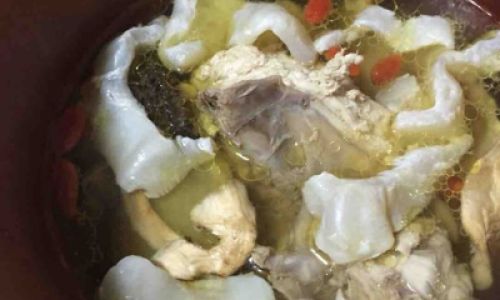
Fish maw soup is best served hot, in bowls garnished with additional scallions and a sprinkle of white pepper if desired. It pairs wonderfully with steamed rice or noodles, making it a complete and satisfying meal.
Tips for Perfect Fish Maw Soup
- Patience is Key: The slow cooking process is essential for extracting the maximum flavor and nutrients from the bones and fish maw. Rushing the cooking time can result in a less flavorful and less tender soup.
- Quality Ingredients: Always use high-quality ingredients, especially the fish maw and bones, as they form the foundation of the soup’s flavor.
- Attention to Detail: Regularly skimming the broth of impurities and tasting as you go will ensure a clearer, more refined final product.
- Customization: Feel free to experiment with additional ingredients to suit your taste preferences. Some people enjoy adding tofu, mushrooms, or even seaweed for added texture and nutrition.
Conclusion
Making fish maw soup is a rewarding culinary endeavor that combines the art of slow cooking with the science of nourishment. By following these steps and tips, you can create a dish that is not only delicious but also packed with health benefits. Whether you’re serving it to family and friends or enjoying it as a personal treat, fish maw soup is a culinary gem that promises to delight and nourish. So, gather your ingredients, roll up your sleeves, and embark on a journey to mastering the art of making fish maw soup. Your taste buds and body will thank you!

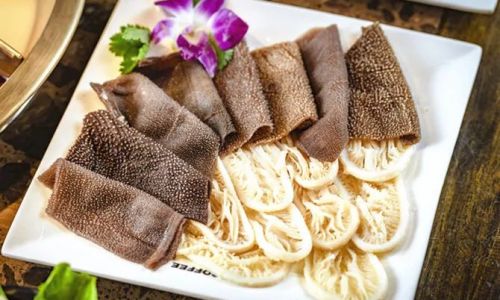


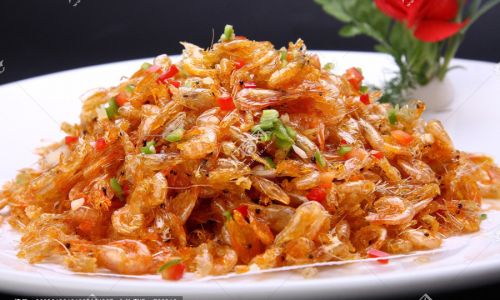
0 comments